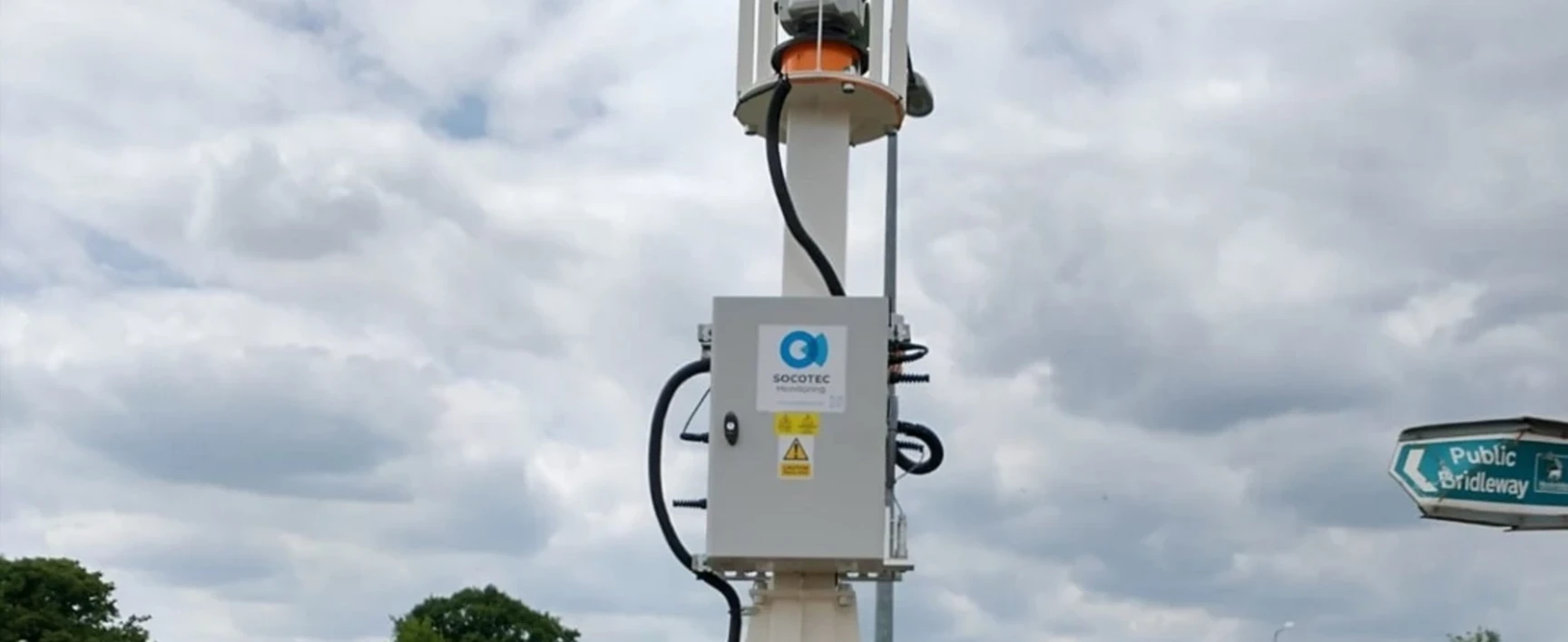Having managed geotechnical and structural monitoring schemes on some of the largest construction projects in London and the surrounding areas – including the Battersea Power Station redevelopment, London Gateway Port and the Bond Street upgrade – Jeff Foggo, senior project manager at SOCOTEC Monitoring, has answered his fair share of client questions.

Below, Jeff shares some of the questions not commonly asked by clients, which he believes should be.
1) How early should I get an instrumentation and monitoring provider onboard?
Ideally, involving instrumentation and monitoring specialists in a project should be a preliminary task. The debate about the value that specialist subcontractors, such as SOCOTEC Monitoring, can add if early engagement is possible is nothing new and, essentially, it comes down to allowing enough time for us to fully understand our clients’ requirements and expectations, and ensuring that those are realistic.
Engaging a specialist instrumentation and monitoring company earlier at the bid stage means they can offer consultative technical and commercial advice, making recommendations for the main contractor’s monitoring specification based on their specialist knowledge. When SOCOTEC Monitoring is involved at the bid stage, drawing on experience of a vast array of scenarios, such as ground conditions, infrastructure types and instrumentation options, a main contractor can be sure that they have a realistic provision for the programme and cost within their own tender, making for a more efficient project delivery.
Other benefits of early engagement include reduced commercial risk, minimising unforeseen project delays, creating a project culture that focuses on collaboration and teamwork, improving the health and safety of the workforce and much more.
With the conversation about early engagement and the multiple benefits it can bring continuing, Stuart Fawcett – business development manager at SOCOTEC Monitoring – discussed why it is still something the industry should strive for in this recent blog.
2) What are the benefits of an automated system over manual surveys?
During the system design and specification phase of a monitoring project, questions should be asked around whether the monitoring system should be manual or automated, or a mixture of the two. Both approaches have their merits and disadvantages, but developments in software, sensors and communication technologies have reduced costs and consequently made automated systems more commonly used. Automated systems do still tend to be more expensive upfront, however.
Thinking about cost, it is not unusual for a construction project – and therefore the monitoring requirement – to overrun. An automated system may cost more upfront but, if the requirement is to conduct monitoring during a 100-week project, sending an engineer to site to manually collect readings is also a large expense. If the project overruns for any reason, or the assets being monitored start to move and the frequency of readings needs to increase to reflect that, the costs are largely fixed if you have an automated system in place. If you have a manual system, however, the engineer’s time on site needs to be extended, creating an additional, unplanned cost.
On one project for a previous employer, Jeff was conducting a weekly survey on some sheet piling. Movements started to reach beyond the trigger levels set and the client was instructed by the stakeholder to increase monitoring to six days a week for a duration of 14 months. The monitoring costs increased six fold due to the need to have a manual system in place, despite being advised to opt for an automated system from the outset.
When considering the viability of an automated monitoring system, clients shouldn’t just focus on price. Emphasis is better placed on the additional value that an automated system can bring, and how having access to more reliable, continuous data can minimise risk. Consideration also needs to be given to requirements around data sampling frequency, data review frequency, site location, access and the safety critical nature of the monitoring, in addition to health and safety considerations for employees and environmental impact.
Any monitoring system used on a project should try and revise or adapt methods of demolition and/or construction in real time. Automated systems should be used to do this where practicable, and continuous data provides this capability. A weekly manual survey for example, will only alert the client to the event after it has happened.
3) Can you have too much data?
As sensors evolve and become increasingly intelligent and connected, many larger monitoring projects have the capability to provide millions of data points. However, it is only sensible to have access to a large amount of data if a client is actually going to use it. Otherwise, huge volumes of data can become negative, as information overload can, at times, cloud what is happening and what is really important.
As instrumentation and monitoring specialists, the team at SOCOTEC Monitoring is experienced at looking at the project requirements and assessing the questions clients need to have answered by the monitoring data. We can then provide guidance around how frequently data is obtained and look at ways of averaging data:
- How to remove erroneous data automatically which could otherwise skew results
- Whether consecutive readings for alert triggers should be established
- To provide clarity to the client over the particular problem being monitored
- To present data in a concise way that allows the client to make informed decisions about their project.
4) What level of structural analysis is included in the scope?
The team at SOCOTEC Monitoring are experts in the design, installation and data provision for geotechnical and structural monitoring systems, but a lot of clients assume that this also extends to data analysis. This area of specialism should be handled by a qualified structural engineer who can receive the monitoring alerts, carry out site inspections and condition surveys in response to the alerts and look at construction activities to understand what might be causing the movements.
SOCOTEC Monitoring ensures that the parameters of a project and the areas of responsibility are clearly defined from the outset. However, if clients are working with other instrumentation and monitoring providers, questions should be asked about the level of data analysis included in the scope.
Ideally, the work that SOCOTEC Monitoring does should be supported by an internal resource from the client. Some of the best projects our teams have been involved with are when the client has a structural engineer in place from the start and they are named on the Emergency Preparedness Plan. SOCOTEC Monitoring supplies the data and carries out quality assurance checks, while the structural engineer is responsible for looking at the construction and assessing why things have moved and/or any trends that are becoming apparent.
If you have any questions about your next geotechnical or structural monitoring requirement, please get in touch.
Want to find out more about SOCOTEC's services?

You might also like







Add new comment